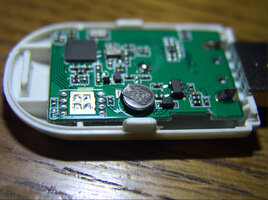TeDaDeS
Forum Addict!
Weirdly enough the One X has more memory (12GB RAM), so the backwards compatibility on Series X (16GB RAM) uses the One X (10GB) game while the Series S (10GB) uses the One S (8GB) version.He is happy whit the Android Pad, and the Win Pad is quite OLD anyway... so i dont see a reason why i should recover it yet..
I forgott one Microsoft Device i would like to recover someday: My XBOX ONEX, i know i had it recover when Amazon brought a Soccer Game Live, but it refused to work: The Stream was whyrd, the Console dit often reboot, or i wait for a third XBOX Series Modell: Whit Disk Drive but whitout the Power of the Series X..
Due to this the One X might sometimes render a game on a high resolution then the Series S. Obviously the Series-S will have some more horsepower to keep the frame-rates stable.
Digital Foundry recently published a video on youtube regarding an SSD in the One X compared to the Series S to see how much they would differ:
So fixing the One X might not be such a bad deal.





